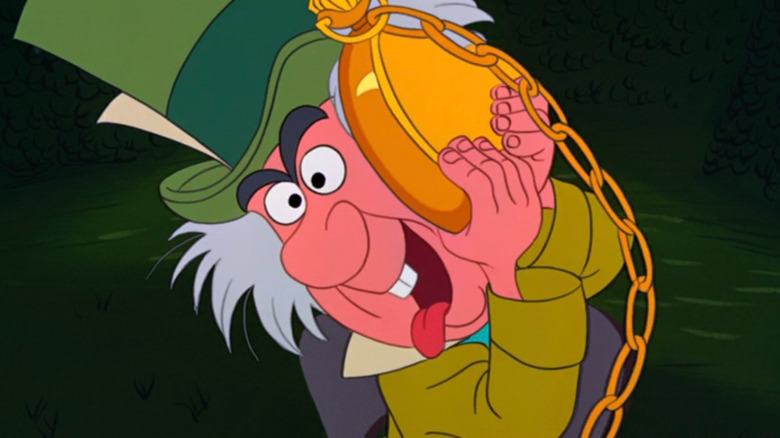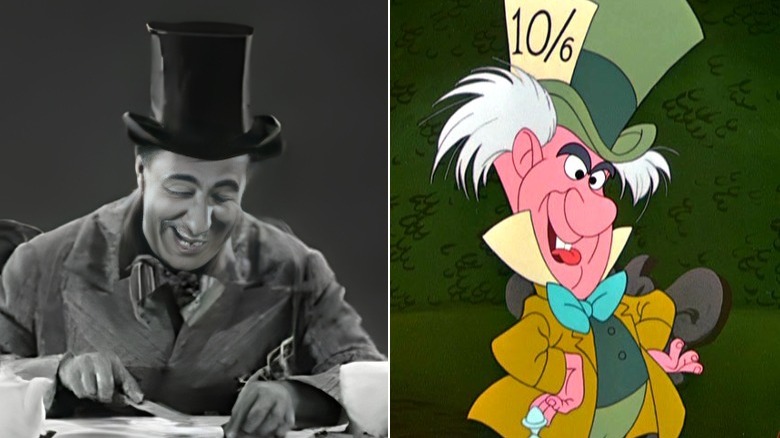Alice In Wonderland: The Secret About The Mad Hatter's Voice You Likely Never Knew
Alice was not the only one who had a tough time with the Mad Hatter in "Alice in Wonderland." Disney employed a unique style of voice acting for the character in its 1951 animated classic, which is why his audio quality distinctively stands out from the crowd.
TikTok creator @brittmichaelgordon shared a video showcasing Ed Wynn, the voice actor of the Mad Hatter (also known to Disney fans as Uncle Albert in "Mary Poppins"), acting out his role and speaking the dialogue on a live-action sound stage, complete with props and costumes. While live-action footage such as this was a standard tool for animators to use to more believably draw and add acting nuances to their characters, it served a different purpose in this case. When Wynn was asked to perform solely through audio, his line reads lacked the vibrancy of his filmed performance. As a result, the "Alice in Wonderland" team decided to use the sound from the footage as the final audio in the film.
The less-concealed exterior noises and echoes from the sound stage caused Mad Hatter's track to contrast drastically in quality with those of other characters, whose actors recorded their lines in a controlled environment through a process known as Automated Dialogue Replacement. ADR is the norm for most animated and live-action films in order to deliver clean audio.
In this instance, the bizarre deviation paid off, as Wynn totally sells the Hatter's goofy and unpredictable nature. However, that doesn't mean Disney animators were always fond of taking things from live-action footage.
Disney artists had mixed feelings on using live-action reference footage
The utilization of Ed Wynn's live-action reference footage in "Alice in Wonderland" is not the typical use of this technique. Using footage of live performers as a reference has been a key tool in unlocking the rich potential of Disney's character animation. But throughout the studio's history, animators have had mixed feelings about using such resources.
Despite the aid that studying real-life objects and people can provide, many animators prefer to use their imagination and drawing abilities to craft their scenes. This can especially be a point of contention when reference footage is used as a guide in a process called rotoscoping. This involves animators tracing the live-action footage directly onto animation paper, making the animated characters look and move more realistically. This technique was pioneered by Disney's rival, Max Fleischer, in the 1910s, and was used heavily in Disney features such as "Snow White" and "Pinocchio."
"Cinderella" heavily used such references, which caused frustration among animators working on human characters. "If the live-action was good, I'd use it," says Disney animator Milt Kahl in a behind-the-scenes documentary. "If it wasn't, I'd use the best parts of it, and I'd use it to help me enhance something... but I still didn't like [it]." At the end of the day, the best animators knew how to enhance the live-action work by bringing an unquestionable animated quality to the final performance.

